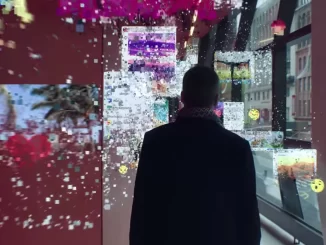Anxiety. That is probably one of the first words that comes to our mind when we hear about data in the 21st century. Big data means a huge volume of data. Not just volume, but a great variety of it. Inability might be the second word. How to work with that data, how to filter and organize it in order to create comprehensible and valuable narrations is a big mystery for journalists of today.
Simon Rogers, a data journalists expert with the Google News Initiative, meets Michael O’Connell in a podcast episode to lend journalists a hand and provide them with some advices to take full advantage of data when creating their own stories. That and other interesting podcasts are available in It’s All Journalism’s website.
Let us list and summarize some of the main aspects that those to become data journalists need to take into consideration.
Visuals are key
Rogers makes a clear statement: “Humans understand visuals better than words or numbers”. That is why the key to create a successful narration based on data is in choosing the best visual format. Data can be difficult to understand. The main responsibility for a journalist to create a story that integrates data in a comprehensible way. There are many options that may help journalists: charts, interactive images, maps, graphics… The Coronavirus Map created by Google is an example.

However, we need to be cautious! Choosing the best format does not mean we need to use the most spectacular graphic techniques. As Paul Bradshaw remarks in his Online Journalism Handbook, “the key to successful data visualization is to be clear what sort of story you are trying to tell: opting for fancy impressive chart types is pointless if the charts don’t actually work”. In other words, first of all it is essential to determine the type of story we want to tell. Second, we should explore the multiple possibilities available nowadays and last but not least, choose the format that fits best with the narration we want to create.
Mobile phones reign
When asked about the main changes in data journalism happening in the last decade, Rogers remarks one: desktops are no longer the main means to consume news. This needs to have an impact on the way journalists produce their pieces. If the audience have moved to mobile phones, journalist must do the same.
That does not mean they should forget about desktops but that they need to think in both devices and adapt their stories differently. This is particularly important when thinking about formats of data visualization due to the fact that some images may not be appropriately visible on mobile phones.
Data as a way to know your audience
Here is another important aspect. As Roger highlights, journalist should not be limited to use data to create stories. In other words, data can be used with other purposes apart from creating narrations. This is the case of audience research. The more we know about our audience’s preferences, the better we can adapt our content to their tastes.

As an example, we have Google Trends. A service that allows professionals “to measure interest in a particular topic across search, from around the globe, right down to city-level geography” according to an article written by Rogers himself for Medium. Thanks to the huge amounts of data Internet users are generating constantly, it is easy to define behavior patterns. Therefore, journalists can now get closer than ever to their audience.
Bet on data
Data is thought to be for computer technicians or mathematicians. I am not going to lie some numerical skills can be helpful in the task of filtering data. However, as Roger says, there was never a better moment to be a data journalist than today! There are several tools that allow journalists to create decent visual formats without having any programming skills.
If you are especially interested in becoming a data journalist then maybe you need to consider learning some programming. If this is only the beginning and you are just trying to see if this is your dreamt job, don’t panic! Data journalism can involve many skills. The best idea is to work in group and gather professionals from the different fields (programmers, designers…) involved in the task of producing a story based on data. Remember that the key is to have a clear idea of what you want to tell!



